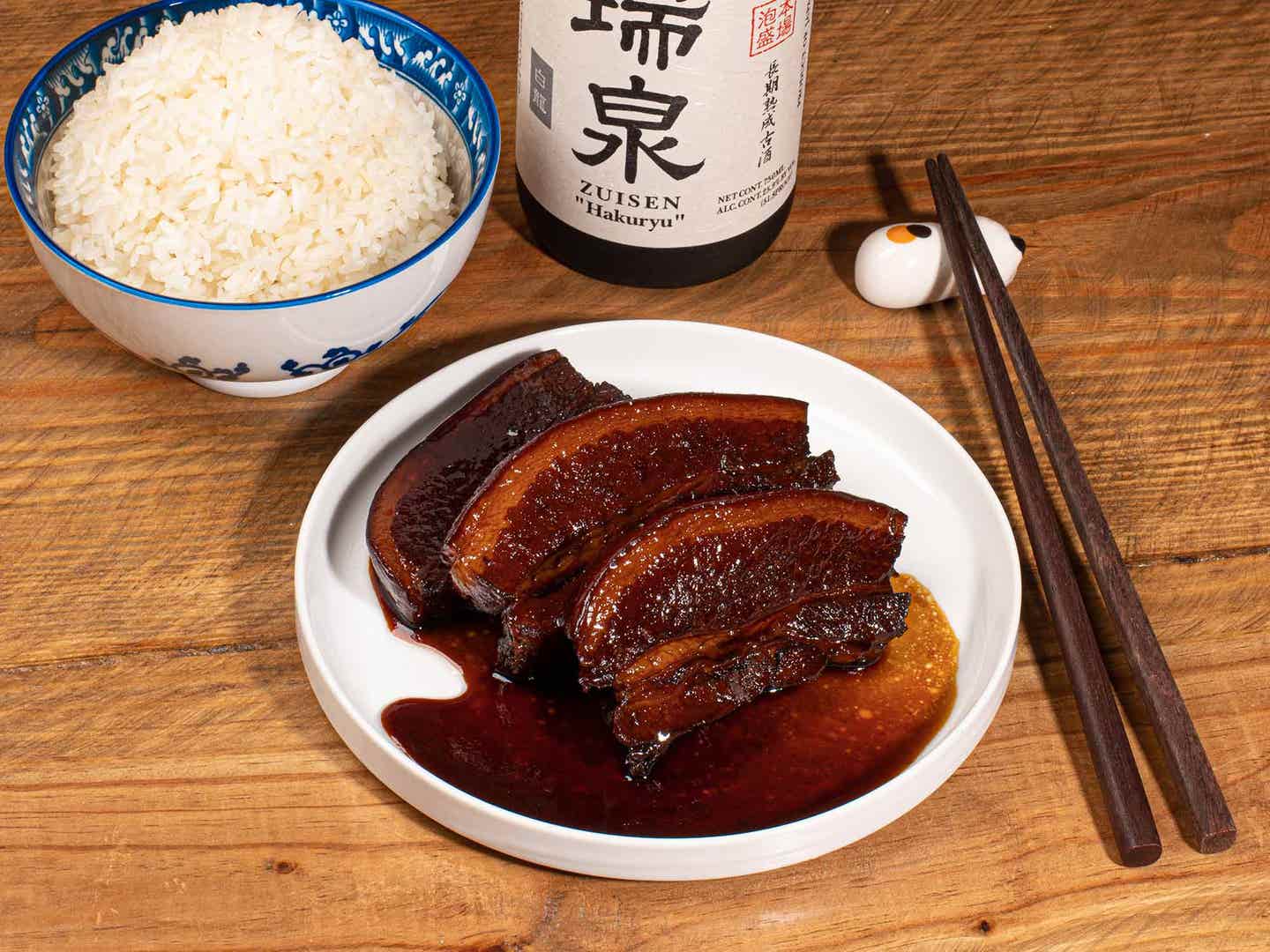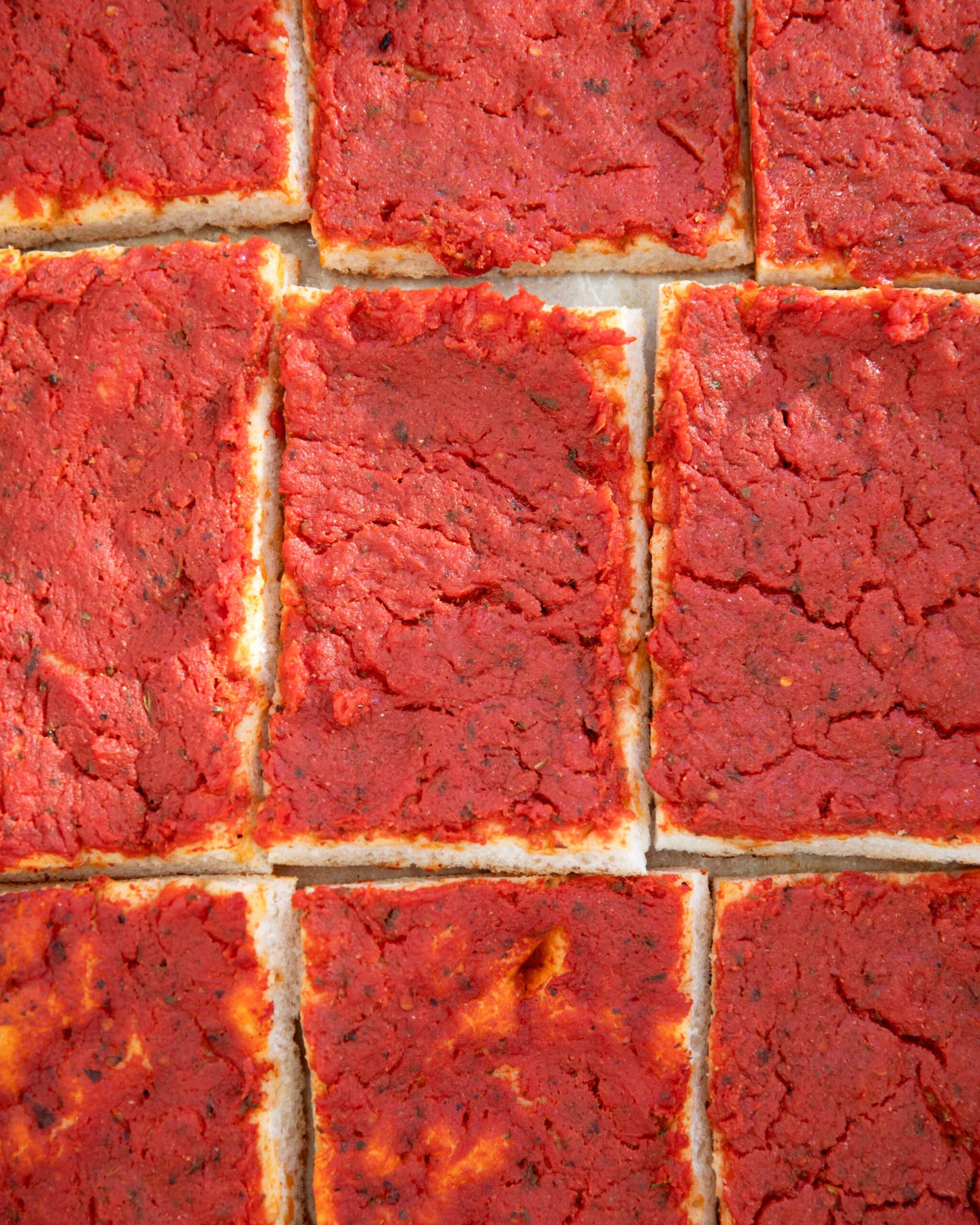Rafute (Pork Belly in Okinawan Shochu and Raw Sugar)
A salty-sweet fatty pork from the island of Okinawa.
- Time
6 hours 20 minutes

Rafute is the Okinawan version of simmered pork belly, flavored with kokuto, a locally produced raw sugar, as well as dashi and awamori, a distinctive spirit distilled from rice inoculated with black koji. These regional ingredients give the festive recipe a bolder flavor than kakuni, the pork belly dish more common elsewhere in Japan which swaps kokuto and awamori for mirin and sake.
In Hawaii, which has a high number of Okinawan immigrants, cooks use brown sugar, sake, and chicken broth for a version of the dish that they call Okinawan shoyu pork.
Ingredients
- 1 1½-lb. piece of boneless, skin-on pork belly, approximately 1 inch thick
- 2 1⁄2 cups dashi (homemade or packaged*)
- 1⁄2 cup awamori
- 4 1⁄2 oz. (about ½ cup) kokuto
- 3 tbsp. Japanese soy sauce
- + Steamed white rice, to serve
- + Japanese-style pickled vegetables, to serve (optional)
Instructions
Step 1
Step 2
Step 3
Step 4
Step 5
Step 6
- To a wide Dutch oven, add the pork belly and enough cold water to cover by an inch. Bring to a full boil over high heat and cook for one minute, then remove from heat, place a colander in the sink, and drain the pork, discarding the cooking liquid. Rinse the meat well with cold water, rinse out the pot, then place the pork back in it. Cover the pork with more cold water and once again bring to a boil over high heat. Skim and discard any foam that forms on the surface of the liquid, then turn the heat to medium-low and cook at a gentle simmer until the pork is cooked through but still quite firm, about 1 hour, continuing to skim as necessary.
- Transfer the pork belly to a heatproof plate then refrigerate, uncovered, until well-chilled, at least 3 and up to 24 hours. Discard the poaching liquid or chill and reserve for another use.
- Meanwhile, make a paper drop lid by cutting a large square of parchment paper about as wide as the diameter of your pot. Fold the sheet in half to make a rectangle, and then in quarters to make a square, then fold two more times to make a narrow triangle of folded paper. Round off the corners at the open edge and cut ¼ inch off the acute tip of the triangle, then unfold the paper. (If done correctly, you should have a circle with a small whole in the center.) Set aside.
- Retrieve the chilled pork belly and cut it into ¾-inch slices. Rinse out the Dutch oven, add the dashi, awamori, kokuto, and soy sauce. Set over medium-high heat and cook, stirring occasionally, just until the sugar is dissolved, 1–2 minutes. Arrange the pork in a single layer at the bottom of the Dutch oven, bring to a gentle simmer, and once again skim and discard any foam that rises to the surface. Gently press the reserved circle of paper over the surface of the pork so that all of the meat is covered, but steam may still escape from the hole in the center of the paper. Continue cooking at a gentle simmer with the paper lid for 1 hour.
- Remove and reserve the paper lid. Using a spoon, flip the pork slices, then return the paper lid to the pot and continue cooking until the meat is very tender and the fat and skin are completely gelatinous, 30–45 minutes more.
- Remove and discard the paper lid. Turn the heat to medium and continue cooking, occasionally basting the pork with the cooking juices, until the sauce thickens to a glossy glaze, 15–20 minutes. Remove from heat and serve with steamed white rice and a side of Japanese pickles, if desired.
Keep Reading
Continue to Next Story










